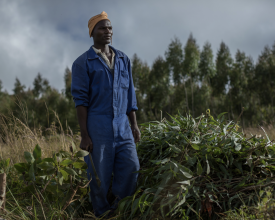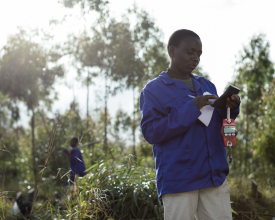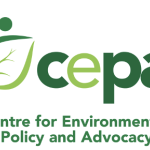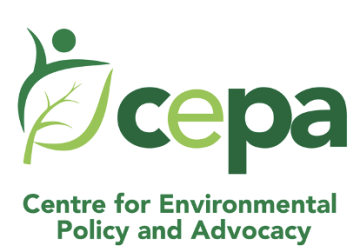
LUCHECHE TREE PLANTATION COOPERATIVE FOR IMPROVED LIVELIHOODS
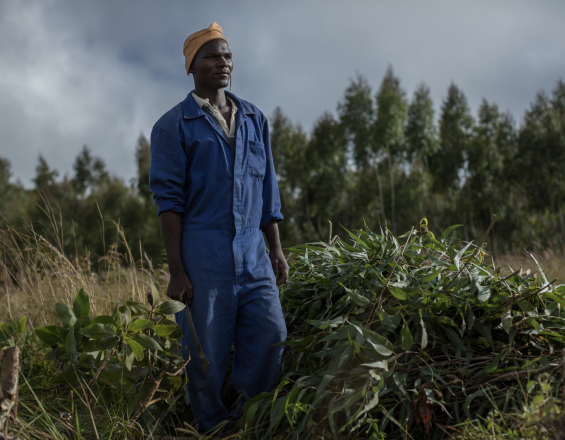
In 2013, Kawandama Hills Plantation partnered with the Lucheche Cooperative to trial the planting of Corymbia citriodora trees on previously bare and underutilized land for income generation. The success of this initiative led to the cooperative’s formal registration and growth to 172 farmers, now managing 70 hectares of thriving trees. With support from a USAID grant (2016–2019), the farmers collectively sell an average of 80 tons of leaf biomass annually to Kawandama Hills for essential oil production. This reliable income has empowered farmers to build better homes, send their children to school, and launch secondary businesses such as dairy and egg farming. Importantly, the cooperative plays a vital role in reducing illegal bushmeat hunting and charcoal production by offering alternative livelihoods. Through mutual support and a revolving loan system, members encourage innovation and expand income-generating opportunities, contributing to sustainable land use and long-term economic growth in the region.
Contexte
Défis à relever
This cooperative model addresses intertwined environmental, social, and economic challenges in Malawi. Environmentally, unsustainable farming practices and widespread deforestation have led to severe land degradation, poor water retention, and loss of biodiversity. Socially, rural communities face deep poverty, with limited access to clean water, quality education, and alternative income sources. Economically, reliance on subsistence farming and illegal charcoal production has left families vulnerable to climate shocks and food insecurity.
Emplacement
Traiter
Résumé du processus
The success of this model lies in the synergy between its components. The Community Forestry Model serves as the foundation by integrating tree planting into individual farming systems, which directly feeds into the Leaf Biomass Market Linkage, turning environmental stewardship into a revenue stream. This market access would not be sustainable without the Cooperative Development and Capacity Building, which organizes farmers, builds governance structures, and ensures collective management. The Grant-Funded Public-Private Partnership was instrumental in catalyzing these efforts, providing resources and legitimacy to scale. As income begins to flow, the Income Diversification and Livelihood Support element helps farmers reinvest in other ventures, reducing dependency on harmful practices. Lastly, the Internal Loan and Support System reinforces this by circulating resources within the community, encouraging innovation, risk-sharing, and resilience. Each block supports and builds upon the others—together creating a holistic and scalable rural development model.
Blocs de construction
1. Community Forestry Model
Kawandama Hills partnered with local farmers to plant Corymbia citriodora trees on their own farmland, encouraging sustainable land use and reforestation. This model protects the environment while giving communities ownership of the process.
Ressources
2. Leaf Biomass Market Linkage
Farmers prune their trees and sell the leaf biomass to KHP for essential oil extraction, creating a sustainable and regular income stream. This reduces the need for environmentally harmful activities like illegal charcoal burning.
3. Cooperative Development and Capacity Building
The informal farmer group was formally registered as the Lucheche Cooperative and trained to manage its operations. This empowered the community to organize effectively and take charge of their development.
4. Grant-Funded Public-Private Partnership
Support from USAID’s PERFORM project helped scale up the partnership between KHP and the Cooperative. The funding strengthened the business model and increased long-term sustainability and impact.
5. Income Diversification and Livelihood Support
With the added income, many farmers have invested in other small businesses, such as dairy and poultry. This economic resilience reduces reliance on unsustainable practices and improves overall wellbeing.
6. Internal Loan and Support System
The Cooperative provides loans among members to support new income-generating ideas and emergency needs. This internal support system fosters solidarity and economic innovation within the community.
Impacts
The Kawandama Hills – Lucheche Cooperative model has delivered strong environmental, social, and economic impacts. Over 70 hectares of Corymbia citriodora trees have been planted on farmland, supporting reforestation, soil conservation, and year-round canopy cover. By providing an alternative income source, the model helps curb illegal charcoal production and bushmeat trading, protecting local biodiversity. The Cooperative has grown to 172 members who supply an average of 80 tons of leaf biomass annually, generating regular income. This has enabled farmers to build houses, send children to school, and invest in secondary businesses like dairy and poultry. A cooperative-managed loan system supports members in times of need and fosters innovation. Overall, the model has improved household resilience, strengthened community cohesion, and restored degraded landscapes.
Bénéficiaires
172 farmers gained income, better homes, and education; local communities benefit from restored forests and reduced illegal activities; women and youth see improved livelihoods and opportunities but also the Plantation benefits of availability of raw material.

